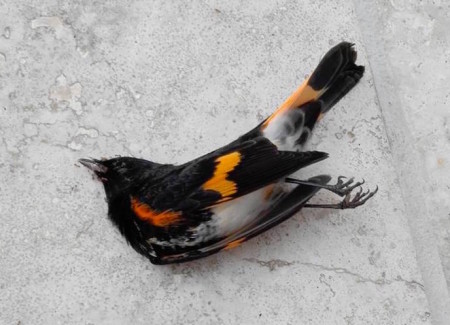
Well, the Atlantic hurricane season is finally over, and island dwellers in the Caribbean can breathe a sigh of relief. The 2016 season that ended on November 30 was an “above normal” one, with 15 named storms, including 7 hurricanes – the deadliest season since 2005. It was unusual in many ways; a certain storm named Matthew certainly behaved strangely – and extremely badly. Matthew was a long-stay visitor to the Caribbean, moving very slowly, and far to the south; then turning north, as if he was doing a tour of the islands. At that point, Matthew decided to wreak havoc in Haiti, eastern Cuba and the Bahamas before descending on the southeastern seaboard of the United States. Matthew was a high-intensity storm, and he was mean.
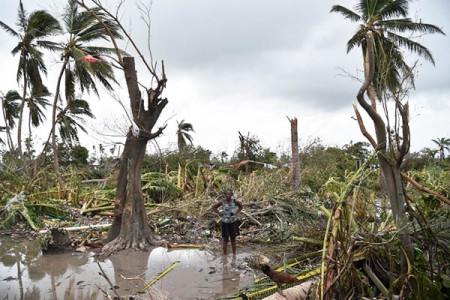
An estimated 1,700 people lost their lives as a result of Matthew and damage amounted to some US$10–12 billion. But what of the ecological harm, and in particular the damage to birds and their habitats? The Caribbean is still counting the cost. Matthew made landfall on Haiti’s Tiburon Peninsula on October 4th as an intense Category Four storm – the strongest storm to directly impact Haiti since 1964. Haiti’s infrastructure is weak, and deforestation remains a major problem. Matthew brought very heavy rainfall along with him, and widespread flooding and landslides occurred, taking hundreds of lives. Worse still, the strong winds (well over 100 miles per hour) destroyed forest habitat as well as crops.
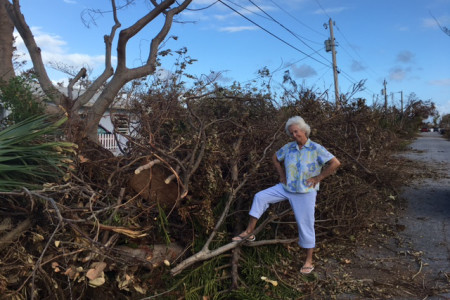
The hurricane was a huge setback for reforestation efforts in Haiti, which had achieved 17 per cent tree cover – almost half of this forest in the Grand’ Anse Department (also the nation’s “breadbasket”). Sadly, this southern region was one of the worst affected by Matthew. As a result of the loss of trees there, bird populations suffered terribly. Dead birds (doves, woodpeckers etc) were found. It is feared that during Hurricane Matthew birds had no safe place to weather the storm, and large numbers perished. In the aftermath, the already degraded habitat was largely destroyed, offering little or no food or shelter for surviving birds.
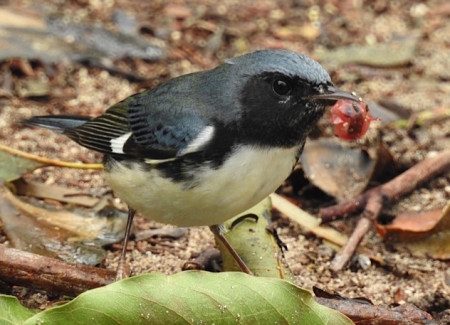
Reports from the Bahamas were also quite grim, post-Matthew. Grand Bahama took a direct hit from the storm’s eyewall and suffered extensive damage. In some areas, almost all homes were damaged or destroyed and there was widespread flooding. Fortunately, there were no casualties – on the human side. However, bird guide Erika Gates reported the loss of all native mature trees (Poisonwood, Gumbo Limbo, Mahogany, and more) at her Garden of the Gates bird sanctuary and in the Westend and Freeport areas. Nevertheless, many small bushes remained, providing food for the birds after the storm.
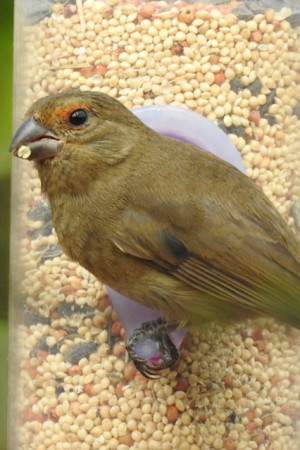
Pericles Maillis reported from New Providence that he had hundreds of starving White-crowned Pigeons on his farm after the hurricane. “Black clouds” of them fed ravenously on cracked corn he put out, a food source that they normally do not come to like other doves.
There is always hope. Many migrants were observed two days after the storm, Erika reported. She surmised they must have survived by staying low on the ground, or in limestone cavities. Despite sustained high winds for more than eight hours, many wading birds such as ibises, egrets and herons – with their long, fragile legs – seem to have survived. One wonders how and where they sheltered! Hummingbirds such as the Bahama Woodstars and Cuban Emeralds were scarce for a while, however, due to the lack of nectar, and some birds appeared to have changed their feeding habits, at least temporarily; for example, the Greater Antillean Bullfinch was observed feeding on seed, instead of fruit. Other birds such as the Black-Throated Blue Warbler fed voraciously after the storm, almost ignoring the presence of humans close by. Some warblers were even seen feeding from trash cans!
Roaring winds, endless heavy rains and tempestuous seas – all those who have lived through hurricanes have vivid memories of this frightening and unnerving experience. The aftermath is often depressing and harrowing. How our fragile birds survive the storm and adapt to stressful conditions afterwards is nothing short of a miracle. In some ways, perhaps, they are more resilient than we humans!
Stay tuned for “Hurricanes and Birds Part 2: How Do Caribbean Birds Survive?”
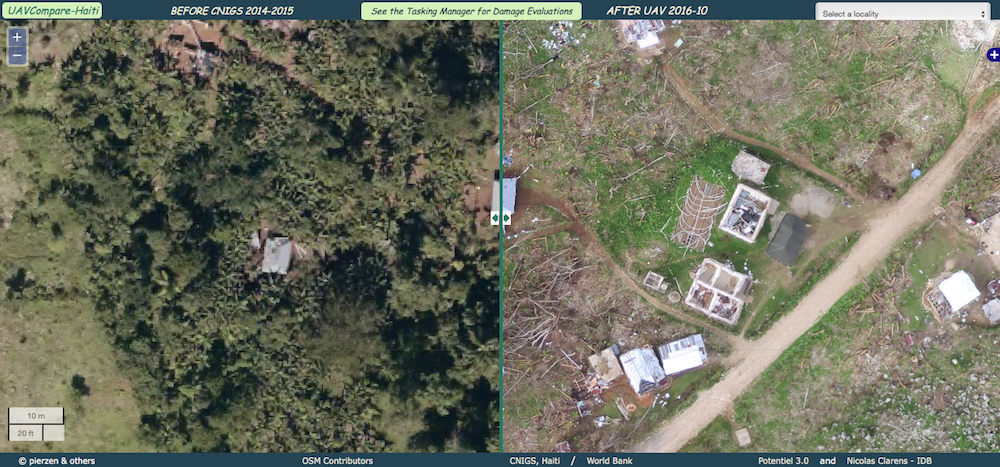
Check out this link with side-by-side UAV (drone) photos that show the impact of Matthew on structures and tree cover. You can pan around in the photos and see that in the area covered there are no trees at all left standing. It is possible that the impact on birds and vegetative cover here may be longer term than other places with larger forest reserves – and lower daily demand for wood as fuel.
By Emma Lewis, frequent blogger for BirdsCaribbean and member of BirdsCaribbean’s Media Working Group. Find me at Petchary’s Blog! Many thanks to Jim Goetz, Anthony Levesque, Erika Gates, and Lisa Sorenson for their contributions to this article.
